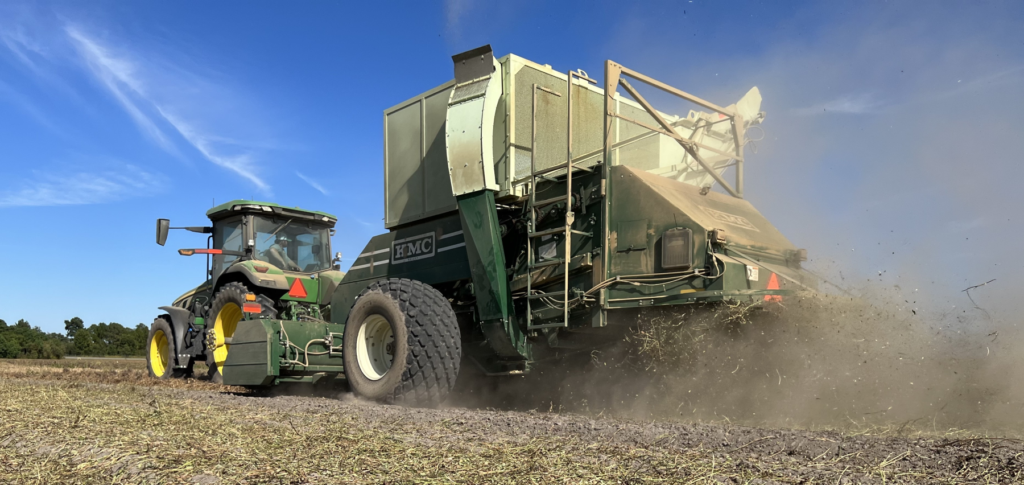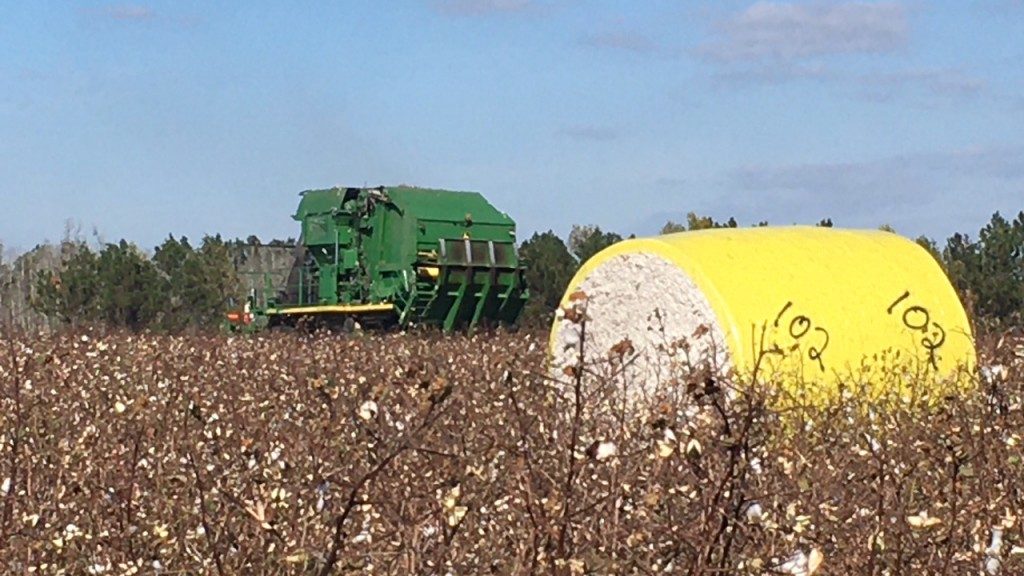Written by Sarah Thompson on September 18, 2025
By Wesley Porter, Scott Tubbs, John Bennett, Seth McAllister, and Sarah Beth Thompson

Unfortunately, we have reached that point in peanut harvest that it has gotten hot and dry for an extended amount of time. This weather can have negative effects on the peanut inversion and harvest process. I have started receiving calls about estimating peanut harvest loss. Thus, I worked through a few resources and compiled the following information.
While there is a lot of information out there on harvest losses for peanut and a few ways to estimate it, some of the methods can be a bit confusing. Hopefully, this post can help to clarify it. Losses during peanut harvest are common and can be caused by improper setup, operation and/or performance of the harvest equipment. Some losses can also be attributed to the field and crop conditions at harvest. Excessive losses can significantly reduce peanut yields and profits if not managed or reduced during harvest. While harvest losses cannot be not completely eliminated, it is always good to understand the level of losses so appropriate adjustments to harvest equipment settings, operational parameters or harvest decisions can be made to keep these losses to the minimum.
In the roughest and most simple check, from a few sources you can estimate that each pod lost per row foot is equal to about 40 lb/ac in Runner type peanuts (and 60 lb/ac in Virginia type). While this gives you a quick estimate, I strongly recommend measuring out a known area and collecting the pods from that area, checking them for actual sound mature kernels, pops, etc. This year we have been observing more pods on the ground making it appear like there are a lot of lost peanuts, it is critical that you verify this.
Peanut harvest losses can be estimated from the number of pods left on the ground after combining through the few simple steps below:
1. Measure and mark a sample area behind the combine using a tape measure and some flags or alternatively you can also use any rectangular or round sampling device as shown below. Note that the larger the measuring area or the device, the more accurate the loss estimation will be. Loss estimations are also more accurate when performed across the entire width of the windrow than in a smaller area. Do your best not to bias this loss estimation by selecting a point in the windrow that you just see a lot of pods.

2. Record the length and width of the marked section or the sampling device and calculate the area in square feet. Remember that if you are measuring a certain length of the windrow, you are working with two peanut rows and a sample width of 72 in. or 6 ft based on 36-in. row spacing. Again, your exact row spacing may vary slightly, adjust accordingly.
3. Make sure to account for moisture content in the pods (formula below)

4. Within the selected area (whether marked using flags or of the sampling device), count the total number of pods and use the formula below to estimate the harvest loss in pounds per acre. Keep in mind that not all pods are mature harvestable peanuts, you should do a check to see how many are mature harvestable pods and how many are pops and adjust accordingly. Ideally, you need to sample in multiple different areas (at least three to five) and compute an averaged value for the number of pods counted from all the samplings. Use the weight per pod from the values provided below for Runner and Virginia peanuts.

*The average weight per pod is estimated to be 1.8 g for Virginia type peanuts and 1.2 g for Runner type peanuts (varies by cultivar and moisture content, adjust accordingly for more accuracy)
43560 is the conversion factor for square feet to acres and 454 for grams to pounds.
5. If you want to be more precise, rather than using average pod weight based on peanut type, you can weigh the total number of pods (in grams) collected within the sampled area and use the formula below to obtain a better estimate of harvest loss. (It does not account for pod moisture, which is not easily measured in-field. Adjust accordingly for most accurate values.)

Example Harvest Loss Calculation
If the average number of pods counted in three, 6 ft wide by 6 ft long sections were 15, then using the sampled area as 36 ft2 and assuming Runner peanuts in the formula from step 3, the total harvest losses would be 48 lb/ac.

This can become difficult if you are collecting this information from a windrow that is not the entire width of the original harvest area. In this case, it’s best to either take the entire width of the new windrow from the harvester and assume that it is the total harvest width (6 rows or 18 ft in most cases) or scale a smaller area. It should also be understood that some of the loss can be coming from either the header or the entire machine. The wider the area you collect the more accurate.
Once you have determined losses, it is time to start considering if you should make any combine adjustments. Below are a few other resources for estimating losses:
Peanut Yield Estimator – Clemson
If you have more questions about peanut harvest loss calculations, or how to delineate the difference between digging, header, or entire harvest loss, please reach out and we can discuss it.
